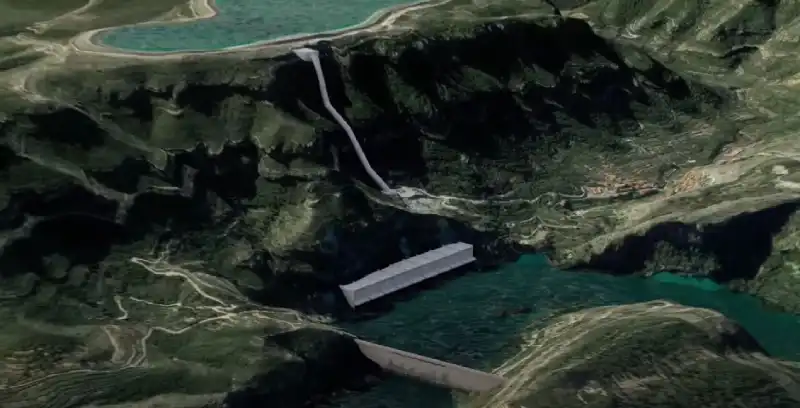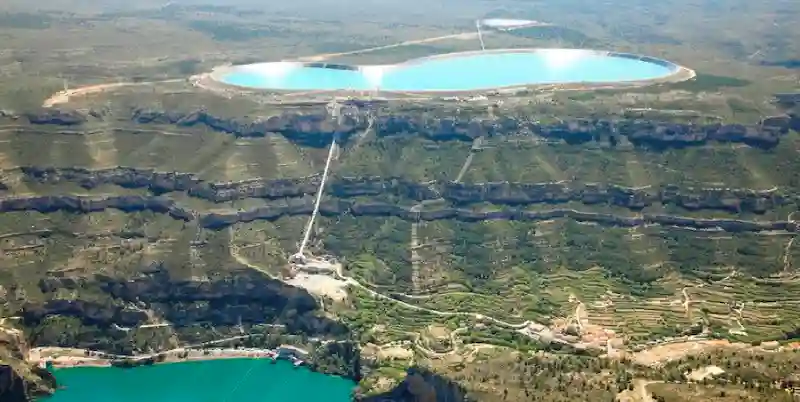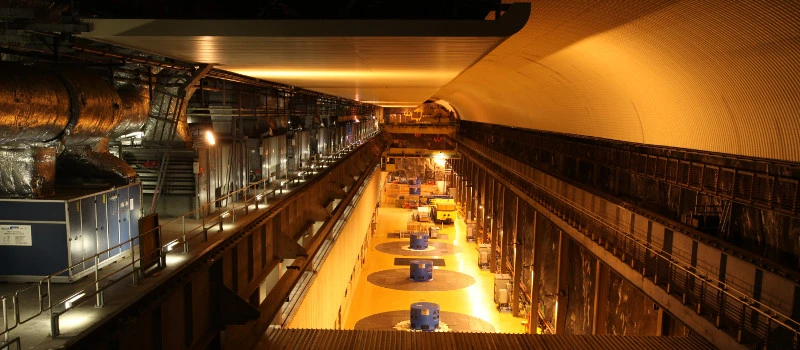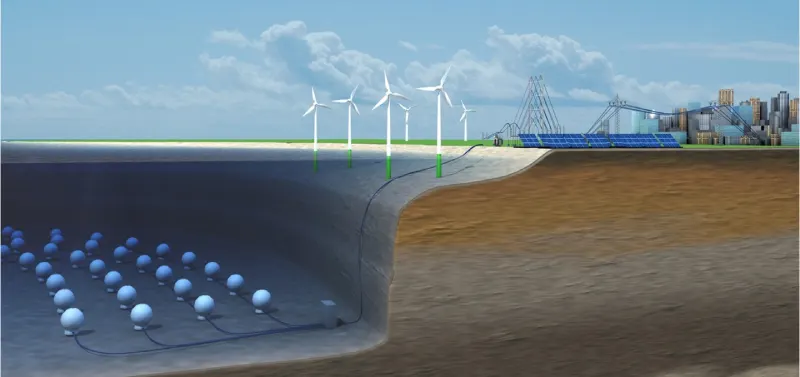Mega batteries: Pumped-storage Hydroelectric (PSH)
Did you know that intermittent renewables are a headache for grid operators? Did you know that grid operators have an altar dedicated to Pumped-Storage Hydroelectric (PSH) in their homes, which they pray to every day before going to work?
Did you know that PSH has been secretly enabling the renewables revolution of the last decade?
Let’s talk about PSH, the most widely used low carbon energy storage solution.
Contents
- The problem: Intermittent Renewables
- The solution: Grid-Scale Energy Storage
- How does Pumped-storage Hydroelectric (PSH) work?
- How much energy is stored by PSH globally?
- What are the benefits of PSH?
- What are the drawbacks of PSH?
- Alternative PSH
- Conclusion
- External Resources
The problem: Intermittent Renewables
The hype behind wind and solar is real.
Both are by far the fastest-growing sources of energy due to the urgency to decarbonise the energy sector, as mandated by international climate commitments.
The unknowing public, which believes that renewables alone are a complete energy solution, hails this as a victory against climate change.
Ignoring the fact that intermittent renewables produce unpredictable amounts of electricity to the grid, as they depend on weather conditions.
This is a nightmare for operators whose job is to balance supply and demand in real time. They must rely on backup fossil fuels in case a peak in demand is simultaneous with a still, cloudy winter day when wind and solar power are at their minimum generation.
This new problem didn’t exist when traditional fossil fuel and nuclear power stations ruled supreme, as their electricity production is predictable (as long as the fuel stockpiles are full!).
But we cannot rely on fossil fuels or nuclear alone, so how can renewables become a full solution?
The solution: Grid-Scale Energy Storage
Plenty of low-carbon alternatives exist to store green energy at a grid scale. i.e. Provide enough energy to meet a regional or national-scale energy supply deficit.
Some technologies, like Li-Ion batteries use chemical reactions to store and release energy and are being aggregated to make large-scale storage.
Others, like flywheels can efficiently use rotational energy for short-term grid balancing, while underground green hydrogen storage is promising but still in its very early stage.
Each of these solutions is impressive in its own right, yet none of them can match the less attention-grabbing yet historical Pumped-storage Hydroelectric (PSH), which at first glance just looks like another hydroelectric project or a complex irrigation system.
How does Pumped-storage Hydro (PSH) work?

Pumped-storage Hydro (PSH) is a type of gravitational energy storage method that uses the height difference between two reservoirs located at different elevations.
When excess electricity is generated by renewables (or is simply too cheap to sell at that time), water is pumped from the lower reservoir to the upper reservoir.
Since the water that is pumped is displaced to a higher elevation, it stores energy in the form of gravitational potential energy.
When electricity is needed, the water is released from the upper reservoir and directed to flow through a turbine, generating electricity as it returns to the lower reservoir.
This process can be repeated for as long as there is water in the reservoirs and electricity to be stored, much like a grid-scaled battery that doesn’t degrade over time.
How much energy is stored by PSH globally?

The IEA reports that Pumped Storage Hydro (PSH) accounts for over 90% of total global grid-scale electricity storage, with a capacity of around 8,500 GWh in 2021.
The US currently has the largest capacity for PSH, with most plants used for daily power rebalancing. However, China is rapidly expanding its capacity and is expected to surpass the US by a significant margin within the next few years.
Of the ten largest PSH plants in the world, six are located in China, two in the US, and one each in Japan and Australia. The largest PSH plant globally is the Fenging PSH plant, capable of storing 60 GWh of electricity at full capacity. The Bath County PSH plant in the US has a capacity of 24 GWh, making it the second-largest.
In essence, these PSH plants are the largest rechargeable batteries in the world, disregarding regular hydroelectric plants that are replenished when their dam fills with streamwater.
The PSH storage monopoly is not likely to change significantly in the next decade, despite the increasing installation of large-scale batteries, for several reasons.
What are the benefits of PSH?

There are many reasons why PSH makes up most of the global energy storage capacity.
Historical Use
Even before the surge in renewable energy, national grids have recognized the importance of storing energy to prepare for spikes in demand, mitigate the risk of fossil fuel shortages, and provide backup in the event of transmission line failures, among other reasons.
Pumped hydro storage (PSH) has been utilized for these purposes and more since the early 1900s, making it a technology with over a century of historical adoption.
Scalable
One thing is clear: scaling low-carbon energy storage is urgently needed, regardless of the technology used.
PSH can scale by simply having more or larger reservoirs (more water) and a larger elevation difference, meaning it can scale infinitely.
Retaining water is the proven method of storing energy; just take, for reference, the Three Gorges Dam in China (the largest hydroelectric project in the world).
After the monsoon rains of 2020, it reached its maximum energy storage capacity at 112 TWh, enough power to supply one-third of the UK’s electricity needs for a whole year.
In short, PSH schemes have the potential to function as colossal batteries. If this amount of water can’t be retained, PSH can scale by having a decentralised network of micro-PSH.
Low-cost retrofit
Pumped-storage hydro (PSH) can be incorporated into existing hydroelectric dams at a low cost, providing energy storage that is already well-integrated with the national grid.
Hydroelectric dams already possess a large reservoir of water, a generator, and the engineering expertise required to install a PSH. All that is needed is the addition of a secondary reservoir and a pump to enable the transportation of water upstream.
Space for solar farms
Low-carbon floating solar farms offer a simple solution for powering PSH pumps by installing them on existing reservoirs.
Additionally, these solar farms can reduce water loss through evaporation and improve water quality by blocking sunlight, thereby preventing the formation of algal blooms.
Furthermore, the construction of new reservoirs can create an environment for ecosystems to thrive and can provide leisure activities such as sailing, which can be particularly valuable in landlocked countries that have limited recreational spaces.
Long Lifespan
Pumped-storage hydro schemes have life cycles of many decades, much like a hydroelectric dam. This means that energy can be stored for thousands of cycles, lowering the overall cost of energy storage over the life span of the project.
In contrast, chemical batteries such as Li-Ion lose their power capacity over time and cannot last more than a single decade.
Water management
One significant advantage of hydroelectric schemes is that they offer water storage for industrial, agricultural, and human consumption by damming the water.
This is particularly true in developing countries where development often comes by the hand of private entities, and PSH installations by businesses may offer this secondary advantage.
This kind of added benefit is often not included in levelised-cost calculations.
What are the drawbacks of PSH?

As good as PSH seems, there are also a couple of drawbacks; It cannot fill every single niche in the market.
Not the fastest response time
As large-scale electricity grids require live re-balancing, it is important to be able to respond rapidly to sudden changes in power output. All power stations have short-scale fluctuations in power output that can last from seconds to minutes, and having re-balancing solutions that can respond to these is critical.
Pumped-storage hydropower, while still necessary for live re-balancing due to its large power capacity, requires several minutes to switch between recharging (uphill water pumping) and providing power (downhill flow into turbine) and, therefore cannot respond to these immediate changes.
On the other hand, mechanical technologies such as flywheels can respond to these changes immediately. Nonetheless, it’s worth noting that PSH response time is still relatively fast, and its large power capacity makes it an indispensable part of live re-balancing.
Average efficiency
The efficiency (i.e. how much energy is effectively transmitted) of PSH is estimated to be between 70 – 80%, which is in the same ballpark as most other energy storage technologies such as batteries and compressed-air systems
The flow of water used to generate energy in PSH is subject to turbulence, resulting in inefficiencies as water particles hit the turbine blades at different angles, without mentioning the system’s water loss (fuel) when they are closed-loop.
In contrast, solid objects that rotate, such as Flywheels, are capable of transferring energy much more efficiently. Flywheels and other pulley-based gravitational storage systems can reach efficiencies approaching 95%!
Low Energy Density
PSH has an average energy density (the amount of energy stored per volume of infrastructure) of ~15 Watt-hours per litre.
This is small compared to most other energy storage technologies, such as Li-Ion batteries (~400 Watt-hours per litre), so we don’t see PSH systems being used in electric vehicles.
PSH requires large (or many) reservoirs to scale, which means that it is unlikely to be effective in places where space comes at a premium.
Land Restrictions
Traditional PSH schemes require above-ground reservoirs, which tend to be frowned upon in well-established areas of natural beauty and national parks due to visual pollution and biodiversity concerns.
This greatly reduces the potential places for traditional PSH to be installed, especially considering that 4.4% of highland areas worldwide are protected areas.
This, however, can be avoided by designing underground, underwater or seawater PSH.
Freshwater scarcity
Traditional PSH relies on water, so it cannot be applied to locations with little water. On top of this, water is becoming increasingly scarce in all ecosystems due to human pressure and climate change.
On the other hand, reservoirs are a great way of managing water resources for human activities, and PSH can have this dual purpose.
But without water, alternative PSH is required.
Alternative PSH
Alternative PSH has been imagined to fill the niches that traditional PSH cannot. i.e. limited freshwater resources and land use restrictions.
Underground PSH

Underground PSH is not new. Dinorwig in Wales, UK, is the 13th largest PSH facility in the world and dates back to the 1970s (before climate change was even a thing).
It was originally built to take advantage of energy arbitrage opportunities (i.e. use cheap electricity at night to pump water and produce electricity at peak hours during the day).
Additionally, Dinorwig is paid for providing on-call frequency regulation for the UK’s national grid. In 2016 it received an extra £10.8 million for providing this service!
We digress; since it was being built within the Snowdonia National Park, the design needed to avoid visual pollution, so the entirety of the infrastructure (pump, generator, pipes) was placed underground.
Seawater PSH
Seawater PSH facilities have the advantage of having an unlimited supply of water (fuel) that is 3% denser (so can hold 3% more energy).The Rance tidal power station in France was the first to pioneer a form of seawater PSH during the 1960s. By using excess energy to pump seawater during low peak hours, they could store energy for use later when selling electricity was more profitable.
The Yanbaru seawater PSH, a purpose-built 30MW facility located on the sea cliffs of Okinawa (Japan), used the Pacific Ocean as its lower reservoir.
Seawater was pumped 136 meters above sea level and stored in a purpose-made reservoir with a lining to prevent seawater infiltration. Specially designed pipes and blades were corrosion-resistant and prevented barnacle adhesion. However, the plant was closed and dismantled due to demand growth miscalculations.
Despite this setback, the increasing demand for energy storage and water scarcity issues will likely revive these designs.
Decentralised PSH
PSH is a versatile solution that can be adapted to any water body, no matter its size, to store energy. This is because pumps and pipes are ubiquitous tools that are available everywhere. For example, consider the following:
- Elevated water tanks can be adapted as PSH reservoirs. It has the additional advantage that mains water usage tends to correlate with energy usage.
- Interconnected reservoirs used for irrigation can be adapted for PSH, bringing a new source of revenue for agriculture.
A Swiss study suggested that incentivising these decentralised micro-storage systems could increase the country’s energy storage capacity by 3x to 9x.
Additionally, decentralised systems are more reliable and democratic than centralised ones, with multiple actors acting as stakeholders of a robust network that lacks significant points of failure.
Bonus: Underwater PSH

We couldn’t afford to write about PSH without mentioning StEnSea, a paradigm shift in PSH that deserves an article on its own.
Instead of storing energy in the form of gravitational potential, this concept takes advantage of pressure differences. This is particularly large when considering the natural water pressure at hundreds of meters below sea level.
Excess energy is used to pump water OUT of concrete tanks installed at a depth of around 700 meters, creating a vast pressure difference (which, somehow, the containers can sustain!).
When energy is needed, the tanks are opened for the deep seawater to rush in and power the generators.
The technology is still in its proof-of-technology stage, but if it meets its benchmarks, it could be deployed in offshore or near-shore intermittent renewables. This is particularly important in Northwest Europe, where offshore wind is the fastest-growing technology.
Conclusion
Pumped-storage Hydro has been historically proven as means of responsive, cost-effective, large-scale energy storage.
PSH can be retrofitted into existing hydroelectric projects, or various smaller reservoirs can be leveraged to create a resilient and vast network of micro-PSH batteries.
PSH encourages reservoirs which offer great opportunities for water management and the optimal installation of floating solar arrays.
When freshwater availability or space is an issue, underground PSH can be built, or Seawater PSH can leverage the Ocean for energy storage.
It’s of course no wonder why PSH has been so prolifically built, and this is expected to remain the same in the future as Li-Ion batteries are desperately needed for vehicles, flywheels can only help in the short-term, and underground hydrogen storage is still science fiction.
Before we go, have you considered comparing business electricity?
If you want to compare business electricity prices, you can use our easy-to-use business energy comparison service.
External Resources
- International Hydropower Association – Hydro Installation Report
- International Energy Agency – Grid-Scale Storage
- Statista – World battery Storage
- Dominion Energy – Bath County PSH
- Fengning PSH
- Youtube – The Futurist
- EPFL – Decentralised PSH
- Applied Energy Journal vol 241 – Micro PSH
- StEnSea – Stored Energy in the Sea
- International Water Power and Dam Construction
- Hackaday
- Drax
- ENR
- Sheffield University
- Water Online

